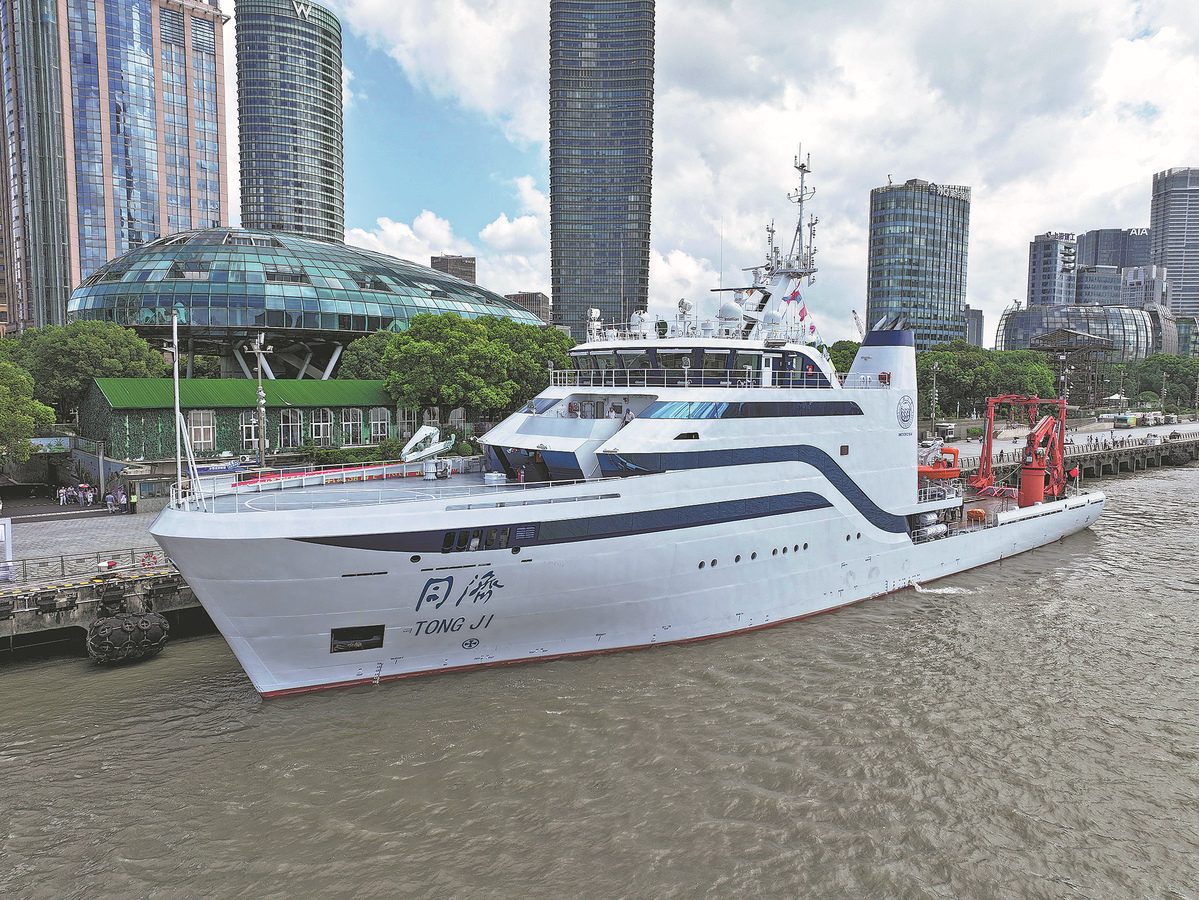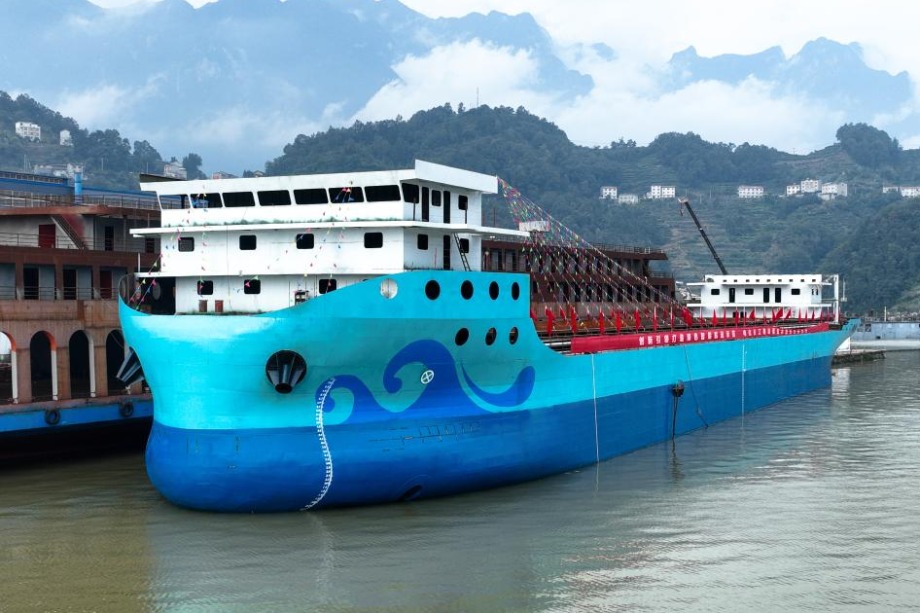Nation commissions first ocean-class research ship


China's first research vessel to be designated as ocean class, called Tongji, was commissioned in Shanghai on Sunday, according to China State Shipbuilding Corp, a State-owned conglomerate and the project's contractor.
The highly intelligent ship was designed by China Ship Development and Design Center in Wuhan, Hubei province, and was constructed by Huangpu Wenchong Shipbuilding Co in Guangzhou, Guangdong province.
Both the institute and the shipyard are part of CSSC, the world's largest shipbuilder.
At a commissioning ceremony, the ship was delivered to its user, Tongji University, one of China's top universities.
The vessel's construction began in April 2024 and was basically completed in January this year. In May, it underwent a comprehensive sea trial.
With a length of 81.5 meters and a width of 15 meters, Tongji displaces about 2,000 metric tons of water and has a cruising speed of nearly 28 kilometers per hour.
The craft can travel about 14,800 km and sustain itself for 35 days in a single scientific voyage without needing resupply. In a typical expedition, it can accommodate 45 sailors and researchers.
Tongji can operate in any ocean — except in the polar regions — and carry out various tasks, including collecting data and supporting marine engineering projects, CSSC said in a statement. Tongji University students can intern on the vessel.
According to its designers, the vessel features all-weather operational capability and can carry remotely operated vehicles, container-style laboratories and various unmanned systems.
It can be used in comprehensive scientific surveys in fields such as marine geology and geophysics, physical oceanography, marine chemistry and marine biology. It is also capable of performing offshore engineering operations such as fault detection, repair and pipeline laying.
In open waters, Tongji can switch its navigation control to an autonomous sailing system. Using advanced sensing equipment, it is able to assess water conditions and gather environmental data, and then process such information to make navigational decisions.
Consequently, the ship can autonomously avoid collisions and steer based on risk levels, significantly reducing crew workload and minimizing accident risks from human error.
Built on a 2,000-metric-ton platform, the vessel maximizes space efficiency to provide 460 square meters of deck workspace and 320 square meters of laboratory area. It also features comfortable living, dining and workout quarters, designers said.
- China aims to raise the average life expectancy to around 80 years
- China launches Long March 5 carrier rocket to deploy new satellite
- Rain respite aids fall harvest in Shandong
- Snowstorms forecast as La Nina onset nears
- China's largest all-electric bulk carrier launched in Central China
- Nation to update cyber law to strengthen AI oversight




































